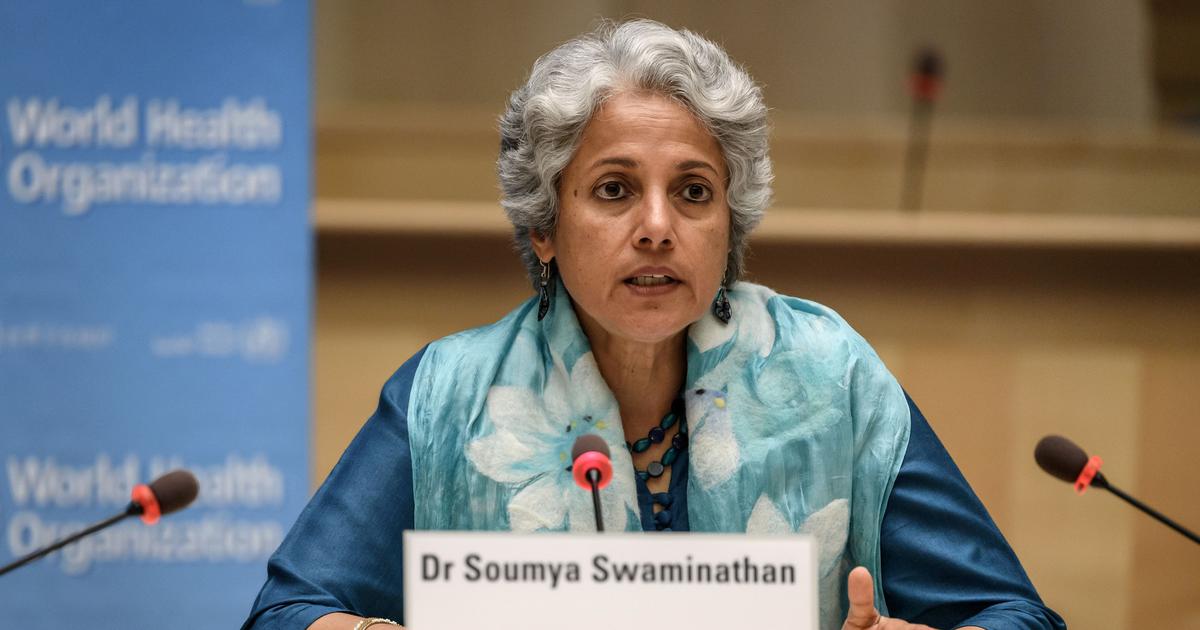COVID-19 may be entering a stage of endemicity in India, with low to moderate levels of transmission, according to World Health Organization Chief Scientist Dr. Soumya Swaminathan. When a community learns to live with a virus, it is said to be in the endemic stage. It’s a far cry from the epidemic stage when the virus has taken over a population.
She expressed confidence that the WHO’s technical group will approve Covaxin as one of the organization’s licensed vaccines, adding that this may happen by the middle of September.
“As far as India is concerned that seems to be what is happening and because of the size of India and heterogeneity of population and immunity status in different parts of the country in different pockets, it is very very feasible that the situation may continue like this with ups and downs in different parts of the country, particularly where there is more susceptible population, so those groups who were perhaps less affected by first and second waves or those areas with low levels of vaccine coverage we could see peaks and troughs for the next several months,” Dr. Soumya said.
According to data released on Tuesday by the Union Health Ministry, India added 25,467 new COVID-19 cases, while active cases decreased to 3,19,551, accounting for 0.98 percent of total infections, the lowest level since March 2020.
Sixteen of the 78 Afghan evacuees who arrived in India yesterday tested positive for the coronavirus. All 78 people have been quarantined as a precaution. All 16 returnees are asymptomatic, meaning they don’t show any signs or symptoms of the virus. Because of the increasing security situation following the Taliban’s surprising sweep to power last week, India has increased its efforts to evacuate its residents as well as Afghan citizens fleeing their country.
According to the Maharashtra health department, the number of Delta Plus coronavirus cases has grown to 103 after 27 new infections were detected in the state.
COVID-19 may be entering a stage of endemicity in India, with low to moderate levels of transmission, according to World Health Organization Chief Scientist Dr. Soumya Swaminathan. When a community learns to live with a virus, it is said to be in the endemic stage. It’s a far cry from the epidemic stage when the virus has taken over a population.
She expressed confidence that the WHO’s technical group will approve Covaxin as one of the organization’s licensed vaccines, adding that this may happen by the middle of September.
“As far as India is concerned that seems to be what is happening and because of the size of India and heterogeneity of population and immunity status in different parts of the country in different pockets, it is very very feasible that the situation may continue like this with ups and downs in different parts of the country, particularly where there is more susceptible population, so those groups who were perhaps less affected by first and second waves or those areas with low levels of vaccine coverage we could see peaks and troughs for the next several months,” Dr. Soumya said.
According to data released on Tuesday by the Union Health Ministry, India added 25,467 new COVID-19 cases, while active cases decreased to 3,19,551, accounting for 0.98 percent of total infections, the lowest level since March 2020.
Sixteen of the 78 Afghan evacuees who arrived in India yesterday tested positive for the coronavirus. All 78 people have been quarantined as a precaution. All 16 returnees are asymptomatic, meaning they don’t show any signs or symptoms of the virus. Because of the increasing security situation following the Taliban’s surprising sweep to power last week, India has increased its efforts to evacuate its residents as well as Afghan citizens fleeing their country.
According to the Maharashtra health department, the number of Delta Plus coronavirus cases has grown to 103 after 27 new infections were detected in the state.


